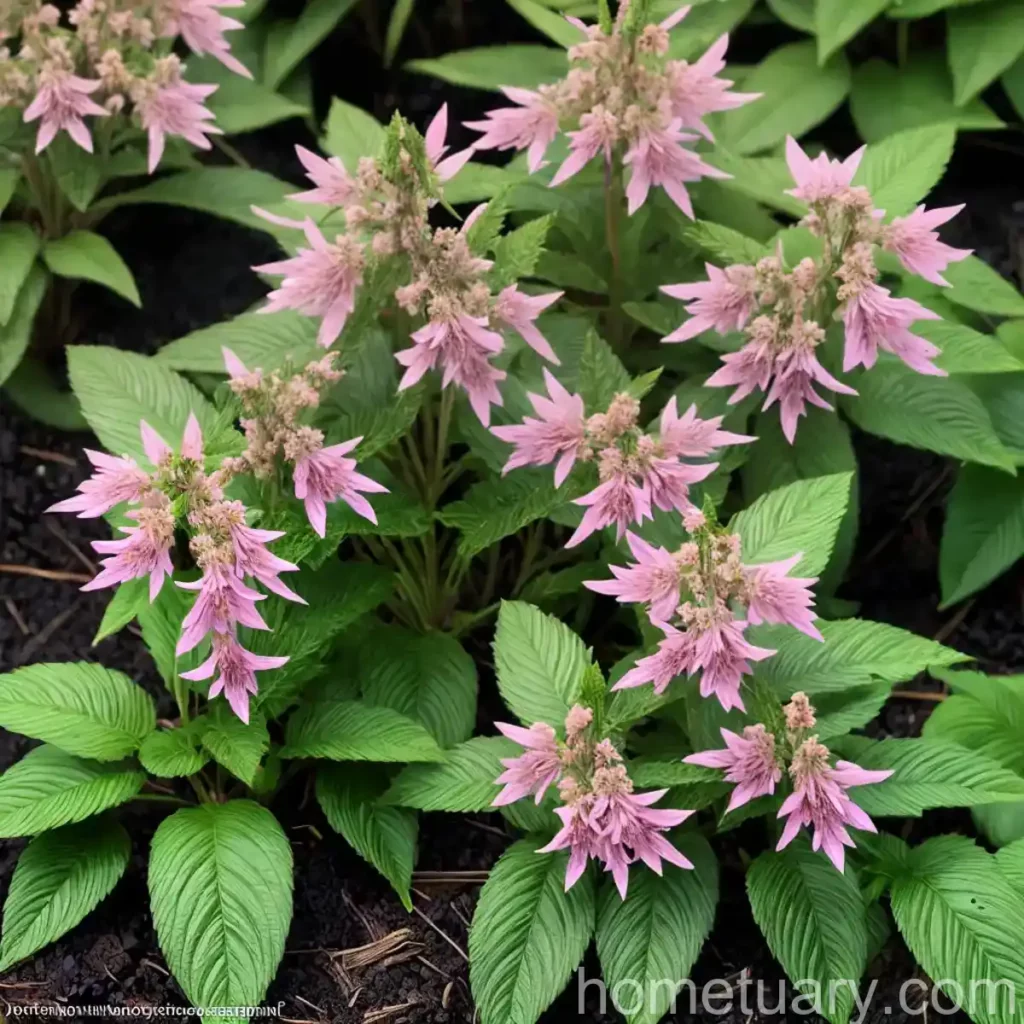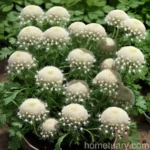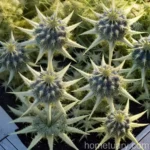Canadian Honewort (Cryptotaenia canadensis): A Comprehensive Guide
Introduction
Plants have always held significant importance in human life. They provide us with food, medicine, oxygen, and environmental benefits. Moreover, they add beauty to our surroundings. Among these incredible plants, Canadian honewort (Cryptotaenia canadensis) stands out due to its various cultural uses, health benefits, and versatile nature. In this comprehensive guide, we will dive into the world of Canadian honewort, exploring its description, cultivation requirements, uses, and much more.
What is Canadian Honewort?
Canadian honewort, scientifically known as Cryptotaenia canadensis, is a perennial herb in the carrot family Apiaceae. It is native to North America and can be found in various regions, including woodlands, thickets, and moist meadows. This herbaceous plant is known for its delicate foliage and small, white flowers, making it a beautiful addition to gardens and natural landscapes.
Key Takeaways – Canadian Honewort (Cryptotaenia canadensis)
Before delving into the details, let’s take a quick look at the key takeaways of Canadian honewort:
- Botanical Name: Cryptotaenia canadensis
- Family: Apiaceae
- Native Range: North America
- Plant Type: Perennial herb
- Cultural Uses: Culinary herb, medicinal plant
- Growth Requirements: Partial shade, moist soil
- Distinct Features: Delicate foliage, small white flowers
Now, let’s explore the various aspects of Canadian honewort in detail.
Culture
Understanding the cultural significance and traditional uses of Canadian honewort is essential to appreciate its historical and contemporary importance. This section will delve into the cultural uses and folklore associated with this plant, shedding light on its role in different societies and traditions.
Canadian Honewort in Folklore and Legends
Throughout history, plants have been deeply intertwined with human culture, myths, and legends. Canadian honewort, with its distinctive appearance and herbal properties, has found its place in folklore and traditional stories. In various Native American cultures, this plant is believed to possess mystical qualities and has been used in spiritual ceremonies and rituals. Its delicate white flowers and lush foliage have inspired tales of natural beauty and resilience, making it a symbol of purity and strength in folklore.
Canadian Honewort in Traditional Medicine
The traditional uses of Canadian honewort in herbal medicine have been documented over centuries. Indigenous communities have relied on this plant for its medicinal properties, using it to address various ailments and promote overall well-being. From teas and poultices to herbal remedies, Canadian honewort has been valued for its ability to support human health. Its leaves and roots are particularly prized for their potential therapeutic benefits, and the tradition of using Canadian honewort as a natural remedy continues to this day.
Uses
Canadian honewort offers a wide range of uses, from culinary applications to medicinal benefits and even ornamental purposes. Understanding the diverse uses of this plant is crucial for harnessing its full potential and integrating it into various aspects of daily life.
Culinary Uses of Canadian Honewort
One of the most prominent uses of Canadian honewort is in culinary practices. The delicate, aromatic leaves of this herb impart a unique flavor to dishes, making it a sought-after ingredient in various cuisines. Whether it’s used fresh as a garnish or cooked into soups, stews, and stir-fries, Canadian honewort adds a refreshing herbal note to culinary creations. Its versatility in the kitchen allows for creative experimentation, and its distinct flavor profile makes it a favorite among chefs and home cooks alike.
Cryptotaenia Canadensis Culinary Properties
- Flavor Profile: Mild, slightly sweet, with hints of parsley and celery
- Aroma: Fresh, herbal, reminiscent of springtime
- Texture: Tender, delicate leaves
- Pairing: Complements salads, seafood, poultry, and vegetable dishes
Medicinal Uses of Canadian Honewort
Apart from its culinary appeal, Canadian honewort also offers valuable medicinal benefits. Rich in phytochemicals and potential therapeutic compounds, this plant has been used in traditional medicine to address various health concerns. From digestive support to immune system modulation, Canadian honewort’s medicinal properties have been appreciated for their holistic approach to well-being. When used mindfully and with proper guidance, it can serve as a natural source of wellness support and enhance the herbal medicine cabinet.
Health Benefits of Cryptotaenia Canadensis
- Digestive Aid: Supports healthy digestion and gastrointestinal comfort
- Antioxidant Properties: Provides potential antioxidant benefits to combat oxidative stress
- Immune Modulation: Supports overall immune system function and resilience
- Herbal Tea: Leaves can be used to prepare soothing and aromatic herbal teas
Growing Cryptotaenia canadensis
Successfully cultivating Canadian honewort requires a nuanced understanding of its unique growth requirements. From sunlight and water to soil conditions and propagation methods, this section will provide a comprehensive guide to growing Cryptotaenia canadensis.
Sunlight
Canadian honewort thrives in partially shaded conditions, making it an ideal choice for gardens with dappled sunlight or light shade. Full sun exposure should be avoided, as it can lead to leaf scorch and diminished overall vigor. When selecting a planting site for Canadian honewort, prioritize locations with filtered sunlight or partial shade, allowing the plant to flourish and display its lush foliage without the harsh impact of direct sunlight.
Water
As a moisture-loving plant, Canadian honewort benefits from consistently moist soil. Adequate watering is essential, especially during periods of drought or dry weather. While it is important to maintain soil moisture, it is equally crucial to avoid waterlogging, as excessively wet conditions can lead to root rot and other water-related issues. Striking a balance in watering practices ensures that Canadian honewort can thrive in optimal growing conditions.
Soil
The soil requirements for Canadian honewort revolve around a preference for rich, well-draining soil with ample organic matter. A loamy or sandy loam soil texture is well-suited for this plant, providing a balance of moisture retention and good drainage. Additionally, maintaining slightly acidic to neutral soil pH (pH 6.0-7.0) can contribute to the overall health and vitality of Canadian honewort, allowing it to absorb essential nutrients from the soil.
Fertilizer
When it comes to fertilization, Canadian honewort benefits from a balanced approach that supports healthy growth without overstimulating excessive foliage at the expense of essential oils and flavor compounds. Incorporating a gentle, organic fertilizer into the soil during the planting phase can provide the initial nutrients needed for establishment. Additionally, top-dressing with compost or a light application of organic fertilizer during the growing season can sustain the plant’s nutritional needs without overwhelming it with high levels of synthetic nutrients.
Pruning
Pruning Canadian honewort serves multiple purposes, including shaping the plant, promoting lateral growth, and harvesting foliage for culinary or medicinal use. Light pruning throughout the growing season can encourage bushier growth and a more abundant leaf yield. However, it is important to avoid over-pruning, as this can compromise the overall vitality of the plant. Regularly harvesting the leaves for culinary purposes naturally results in a form of pruning, allowing for a continuous harvest while promoting new growth.
Propagation
For gardeners looking to expand their Canadian honewort collection or share this plant with others, propagation via seeds or division offers viable methods for multiplying plants. The following section will outline the propagation techniques for Canadian honewort, providing insights into the best practices for successfully growing new plants.
Seeds
Canadian honewort seeds can be sown directly into prepared garden beds or started indoors before being transplanted. Sowing seeds in a well-prepared seedbed or container with a light covering of soil can encourage germination and the development of seedlings. By providing consistent moisture and mild temperatures, gardeners can support the growth of new plants from seeds, leading to a bountiful supply of Canadian honewort.
Division
Dividing established Canadian honewort plants offers an effective means of propagation, helping to create new plantings and rejuvenate existing ones. The process involves carefully lifting and separating the plant’s root system into smaller sections, each with viable roots and shoot growth. By transplanting these divisions into new locations or containers, gardeners can expand their Canadian honewort collection and ensure the continued propagation of this valuable herb.
Container Gardening
The adaptable nature of Canadian honewort makes it well-suited for container gardening, allowing individuals with limited space or specific growing conditions to cultivate this herb. Whether it’s on a sunny balcony, a shaded patio, or an indoor herb garden, Canadian honewort can thrive in containers when provided with the appropriate care and attention.
Container Requirements
When selecting containers for Canadian honewort, prioritize options that provide ample space for root development and sufficient drainage to avoid waterlogged conditions. Consider using pots or planters with drainage holes to facilitate proper water management and prevent soil saturation. Additionally, choosing a high-quality potting mix or creating a custom blend with good moisture retention and aeration benefits the plant’s overall health in a contained environment.
Popularity
Canadian honewort has gained popularity in gardening and culinary circles due to its unique characteristics and versatile uses. Its increasing presence in home gardens, herbal medicine practices, and gourmet cuisines reflects a growing appreciation for this perennial herb. As more individuals discover the allure of Canadian honewort, its popularity continues to rise, serving as a testament to its enduring appeal and practical value.
Common Uses in Contemporary Settings
In modern kitchens and culinary enterprises, Canadian honewort has garnered attention for its fresh, herbal flavor and subtle aroma. Chefs and culinary enthusiasts embrace its culinary versatility, incorporating it into a wide array of dishes to elevate flavor profiles and add a touch of elegance. The use of Canadian honewort in various culinary creations showcases its adaptability and capacity to inspire innovative culinary experiences.
Common Diseases
While Canadian honewort is generally resistant to many common plant diseases, certain environmental factors and growing conditions can predispose it to specific issues. Understanding the potential diseases and ailments that may affect this plant is essential for maintaining its health and vitality.
Disease Diagnosis
Correctly identifying and diagnosing diseases that affect Canadian honewort is crucial for implementing timely and effective management strategies. By being vigilant and observant, gardeners can detect signs of disease early on and take appropriate action to mitigate the impact on their plants.
Powdery Mildew
One of the potential diseases that can affect Canadian honewort is powdery mildew, a fungal infection that manifests as a powdery, white coating on the leaves and stems. This common foliage disease can develop in conditions of high humidity and poor air circulation. To prevent powdery mildew, maintain adequate spacing between plants, promote airflow, and avoid overhead watering, which can contribute to moisture retention on plant surfaces.
Common Pests
While Canadian honewort is relatively resistant to pest infestations, it may occasionally encounter certain pests that can impact its growth and overall condition. Recognizing these common pests and implementing control measures when necessary can safeguard the health and vigor of Canadian honewort.
Aphids
Aphids are a common pest that can affect Canadian honewort, particularly in lush, tender growth areas. These small, sap-sucking insects can cause distortion of new growth and the development of sticky honeydew, leading to the potential for sooty mold to develop. Implementing pest monitoring and utilizing natural predators and insecticidal soaps can help manage aphid populations and protect Canadian honewort from excessive damage.
Botanist’s Tips
To enhance the success of growing and caring for Canadian honewort, the following tips from botanists and experienced gardeners can provide valuable insights and practical advice for cultivating this perennial herb.
Tip 1: Partial Shade Preference
Understanding Canadian honewort’s preference for partial shade and dappled sunlight guides gardeners in selecting optimal planting locations and ensuring the plant’s overall well-being.
Tip 2: Moisture Management
Maintaining consistent soil moisture without waterlogging is essential for the health and vitality of Canadian honewort, providing the ideal growing conditions for this moisture-loving plant.
Tip 3: Culinary Harvesting
Regularly harvesting Canadian honewort leaves for culinary use not only encourages bushier growth but also allows for the continuous enjoyment of fresh, aromatic foliage.
Fun Facts
Delving into the realm of fun facts about Canadian honewort adds an element of intrigue and discovery to the appreciation of this plant. From its historical significance to its ecological contributions, these fun facts shed light on the multifaceted nature of Canadian honewort.
- Historical Herbal Uses: Canadian honewort has a rich history of use in herbal medicine, tracing back to Native American cultures and traditional healing practices.
- Ecological Benefits: In addition to its culinary and medicinal value, Canadian honewort contributes to local ecosystems by supporting pollinators and wildlife with its nectar-rich flowers.
Now that we have explored the various dimensions of Canadian honewort, from its cultural uses and growth requirements to its culinary and medicinal applications, let’s further expand our understanding by delving into external resources and additional information.
Links to External Resources
To delve deeper into the world of Canadian honewort and gain further insights into its uses, cultivation, and broader implications, the following external resources provide valuable information and perspectives:
- University of Maryland Extension: Growing Herbs
- The Herb Society of America
- United States Department of Agriculture (USDA) Plant Database
By consulting these external resources, enthusiasts and practitioners can expand their knowledge base and continue to explore the multifaceted realm of Canadian honewort.
In conclusion, Canadian honewort (Cryptotaenia canadensis) offers a captivating blend of cultural significance, culinary appeal, and potential health benefits, making it a valuable addition to gardens, kitchens, and herbal medicine practices. With its delicate foliage, versatile uses, and historical resonance, Canadian honewort continues to inspire an appreciation for the natural world and the treasures it bestows upon us.
As we embark on our journey to nurture and celebrate plants like Canadian honewort, let us embrace their enduring relevance and the wealth of knowledge they offer, enriching our lives and connecting us to the wonders of the natural world.















